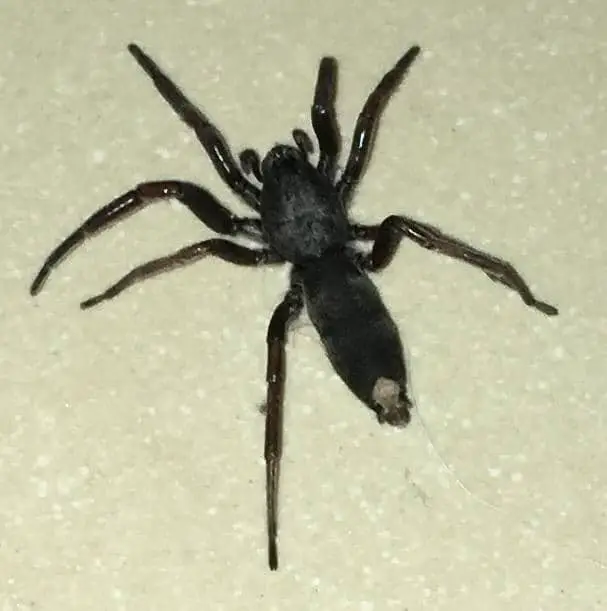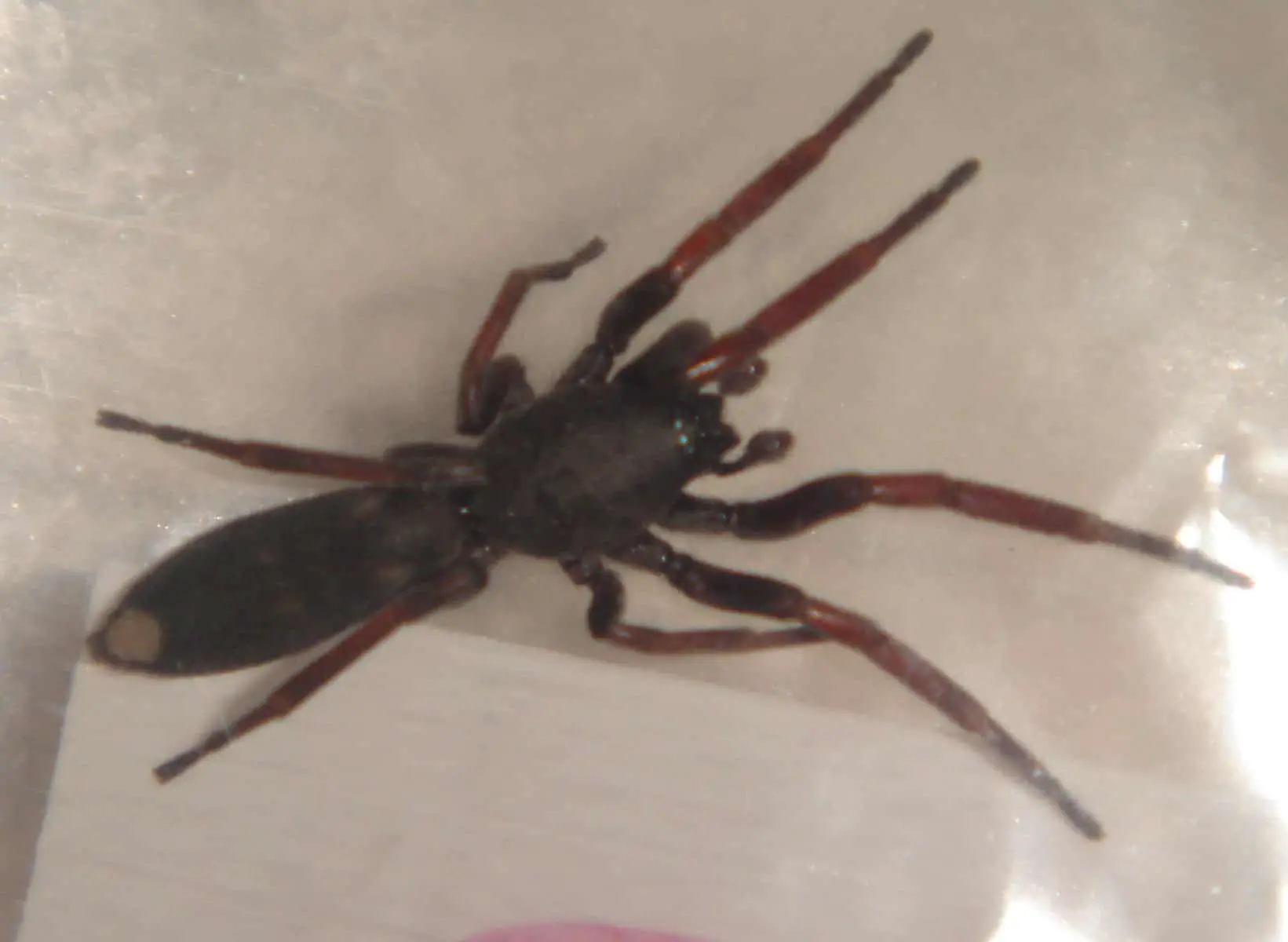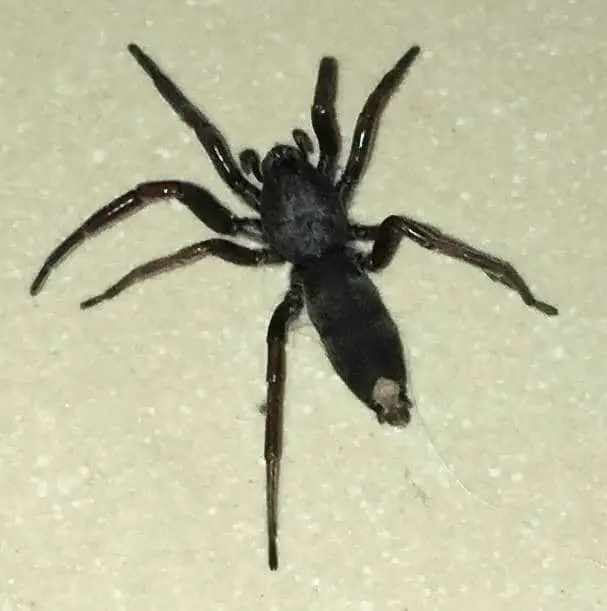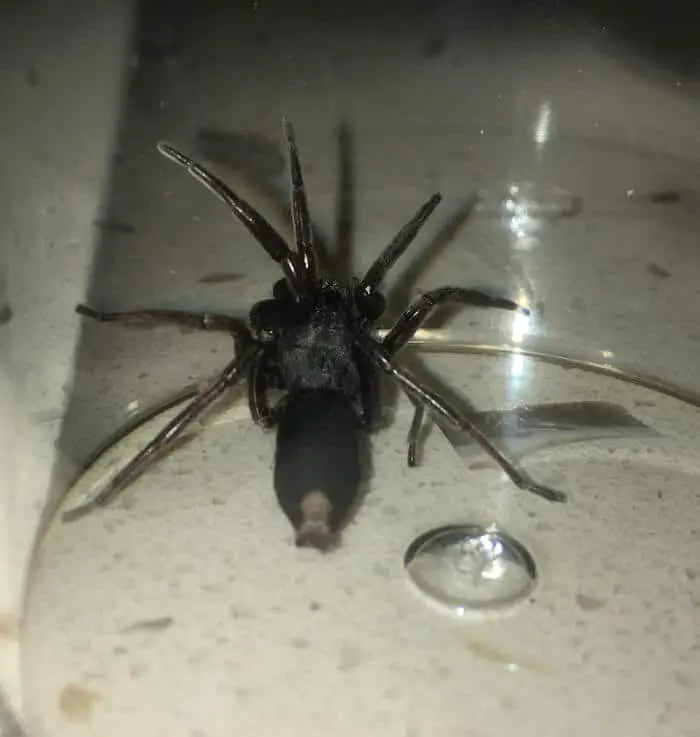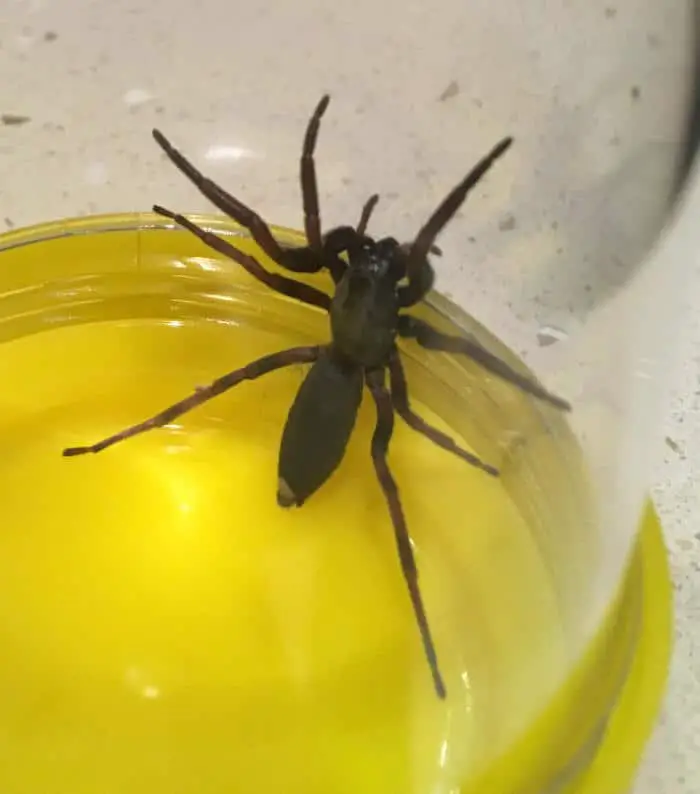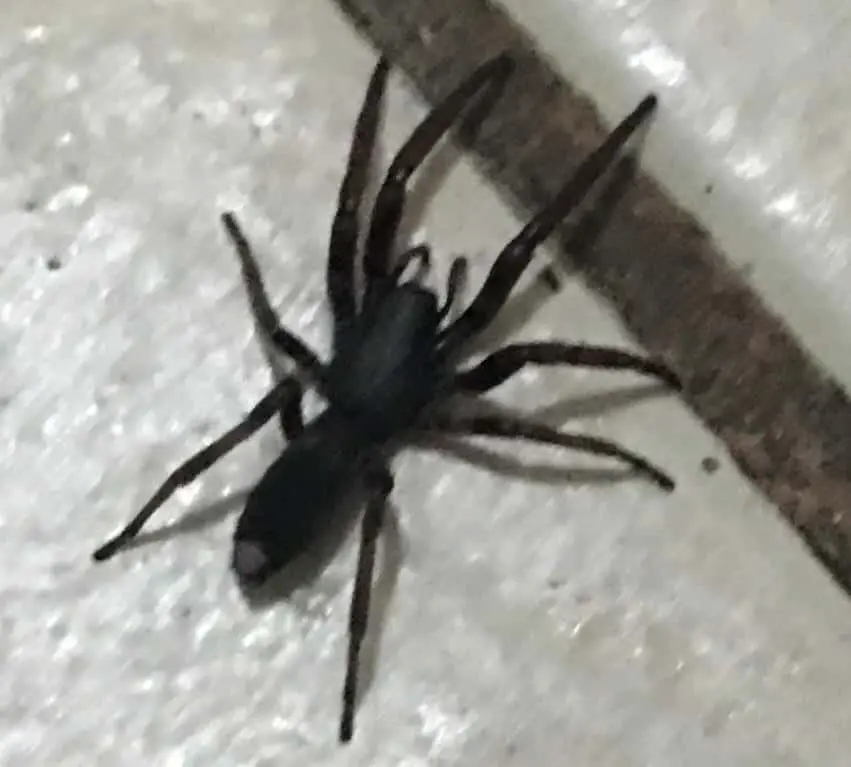The White Tailed Spider (Lampona cylindrata) is about the size of a 50c piece when fully grown, with a leg diameter about the size of a pin. It has a grey cigar-shaped abdomen with a white spot on the end and sometimes the legs are banded with light traverse marks on the abdomen. These markings are more predominant on the juvenile White Tailed spider. It is typically found in cool, dark areas – under bark, in gardens, litter, walls and beds. It is active at night time and often enters buildings where it can be seen walking across floors and up walls. It is commonly found in the bedroom and during daylight hours, the spider seeks a dark place to hide. Indoors, this may be in clothing that has been left lying about and bites may occur when this clothing is put on.
It is most prevalent in Spring – Autumn and there are many species in Australia and New Zealand. The White Tailed Spider does not usually build a web, preferring to rove around. It prefers to nip and run when cornered but can bite repeatedly. Bites by this spider are relatively frequent due to its wandering habit.
White-tailed Spider bites can cause initial burning pain followed by swelling and itchiness at the bitten area. Occasionally, weals, blistering or local ulceration have been reported – conditions known medically as necrotising arachnidism. As well as the spider’s venom, minor bacterial infection of the wound may be a contributory factor in such cases. A debate continues about the involvement of White-tailed Spider bite in cases of severe ulcerative skin lesions seen in patients diagnosed as probable spider bite victims. Typically, in such cases no direct evidence of spider bite is available.
Sensational media reporting of supposed cases of severe “necrotising arachnidism” has given the White-tailed Spider a bad reputation. However, a recent study has monitored the medical outcomes of over 100 verified White-tailed Spider bites and found not a single case of ulceration (confirming the results of an earlier study). The available evidence suggests that skin ulceration is not a common outcome of White-tailed Spider bite. White-tailed Spiders around your house can be controlled by catching and removing any that you see and by clearing away the webs of the house spiders upon which they feed.
All photos are copyright to their owners and may not be reproduced without permission.

